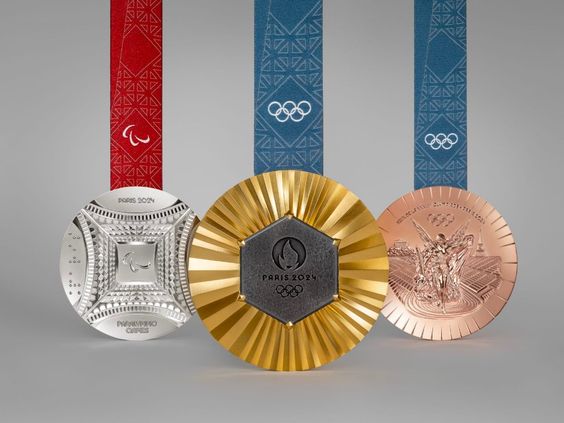
Winning a gold medal in any competition is the culmination of many years of strict regime, intense training, perseverance, discipline, and sacrifices for an athlete and holds a significant meaning for his family and country as well. Although the gold medal is priceless, the worth of the material used in its making can be measured.
The Summer Olympics 2024, officially known as “the Games of the XXXIII Olympiad Paris,” has finally commenced with the grand opening ceremony in Paris, France on Fri, 26 Jul, 2024.
In front of billions of viewers around the globe, approximately 10,500 athletes are participating across 32 sports in 329 medal events, competing for the Olympics’ ultimate prize, the gold medal.
The cost of a 2024 Olympic gold medal, based on the spot price of gold, silver, and iron on the morning of July 24 is approximately $950—it is the highest value of any gold medal in the history of the modern games because of the record high prices for gold.
What is the measurement of the Olympic medals?
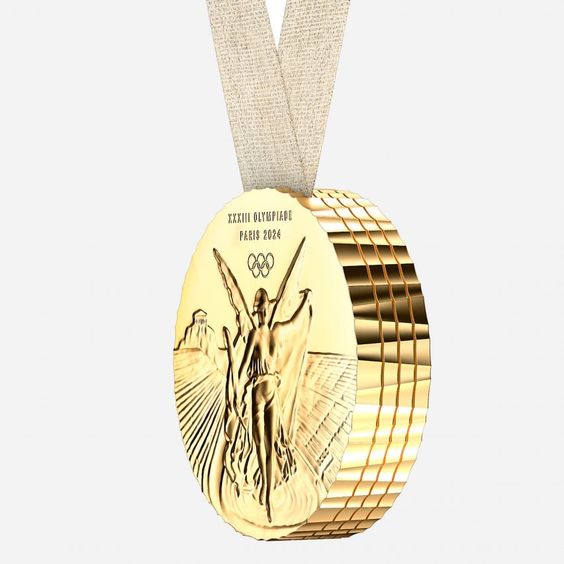
Each medal is 85 millimeters across and 9.2 millimeters thick, with 18 grams of hexagonal metal in the center from the Eiffel Tower.
The Olympic Gold
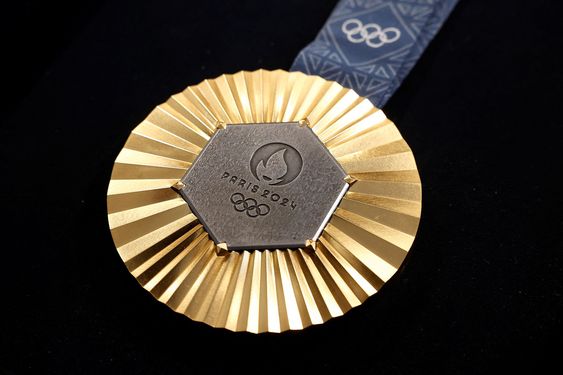
As per reports, the total weight of the Olympic gold medal is 529 grams. Approximately 505 grams, i.e., more than 95.4% of the metal is silver, and only six grams of gold serve as the plating for the medal; the rest of the 18 grams are composed of iron.
The last time pure gold medals were awarded in 1912, but the present value of the medal if made of pure gold would be approximately $41,161.50 and not $950.
The Silver Medal
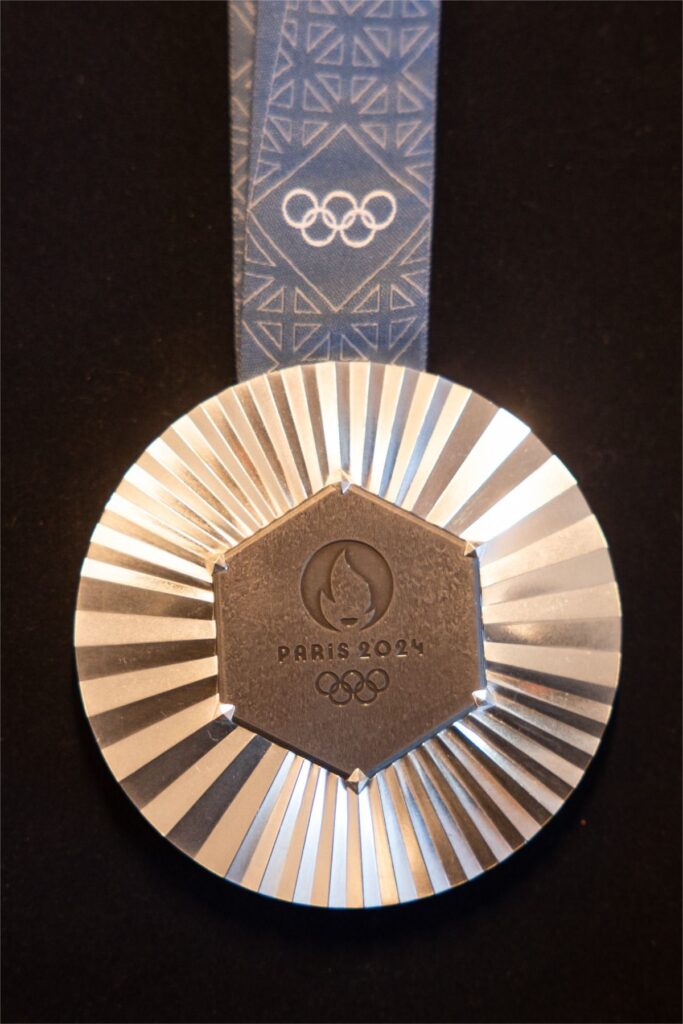
The medals of silver weigh 525 grams, with 507 grams of silver and 18 grams of iron. According to the spot price for silver and iron, the value of the medal on July 24 is approximately $486.
The Brighter Bronze

The same goes with the bronze medals. They consist of copper (415.15 grams), zinc (21.85 grams), and 18 grams of iron. The total weight of the medal is 455 grams, and the material value is approximately $13.
Why is there an Iron in the middle of the medal?

Generally, iron is not used in gold medals, but this time it holds a special reason. As the iron used in the medal is not ordinary, this chunk of 18% comes from the majestic Eiffel Tower of France in Paris, which has survived the challenges and trials of time, making it an ideal way to honor and celebrate the winner’s journey of struggle and determination.
According to the official Olympic website, the metal piece in the medal came from sections of the monument. These sections were removed and preserved carefully while modernizing the elevator around the 20th century.
The metal was refined in the forges of eastern France’s city of Pompey through a process called “puddling.” After removing the excess carbon from the cast iron, the iron emerges as “almost pure and extremely robust.”
Who designed the Paris Olympic-2024 medals?

The Paris 2024 Olympics medals are designed by the historic French high jewelry house, Chaumet. The jewelry studio was founded in the 18th century and is best known for creating jewels and tiaras for French and British royalty.
In a statement, LVMH, the company that owns Chaumet, shares that “it is the first jeweler in the history of the Olympic and Paralympic Games to design the medals.”
The French Heritage and History of the Olympic Medals
The front side of the Paris 2024 Olympic medals.
The medals are designed on both sides; the front, has a iron chunk from the Eiffel Tower in the center, the hexagon shape, depicts the shape of France. The camouflaged face of Marianne—a revered symbol of the French Revolution for people of France— with golden Olympic flame is on the top, and the words “Paris Olympics,” with the five-ring Olympics logo, sit below the emblem.
The Emerging Sun in the Medals
The sequence of the emerging sun rays in the metal rays renders the radiance of the nation as it hosts the Olympics. Chaumet said in its statement, “This radiance is heightened by the faceting on the medals, designed to reflect light and evoke the French capital’s nickname, the ‘City of Light’. At the same time, it imparts a special brilliance to the athletes who will wear the medals around their necks.”
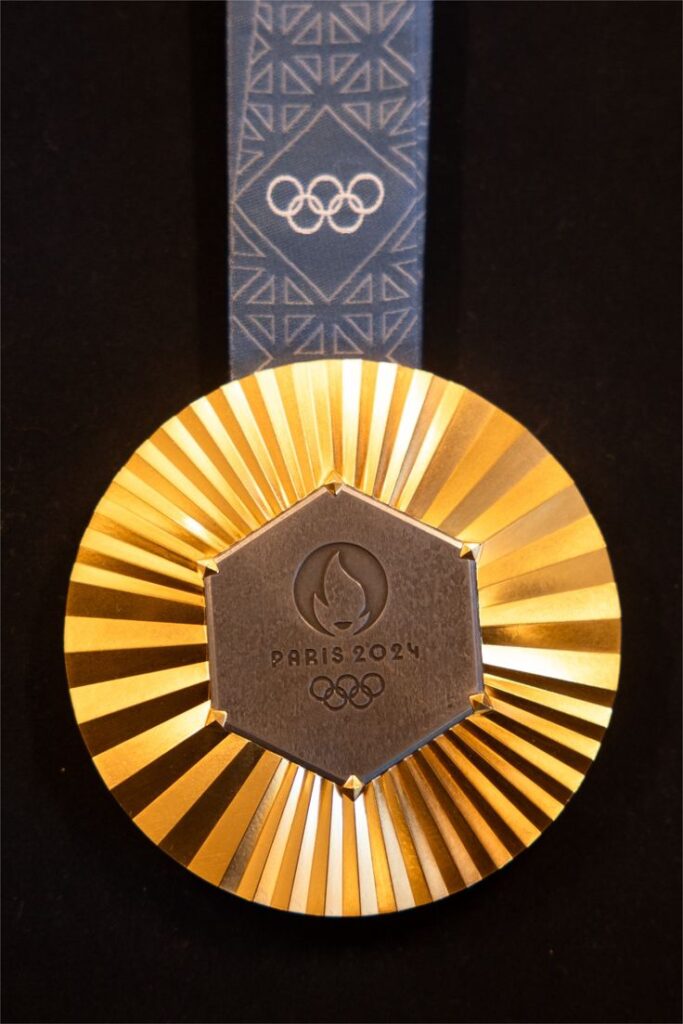
The Claws of the Eiffel
The six metal appurtenances on each corner of the hexagon-shaped center use a “griffe setting” technique (used for holding the central stones of the rings and in the centerpieces of ornaments). They are designed to imitate the rivet pattern of the Eiffel Tower.
The reverse side of the Paris 2024 Olympic medals
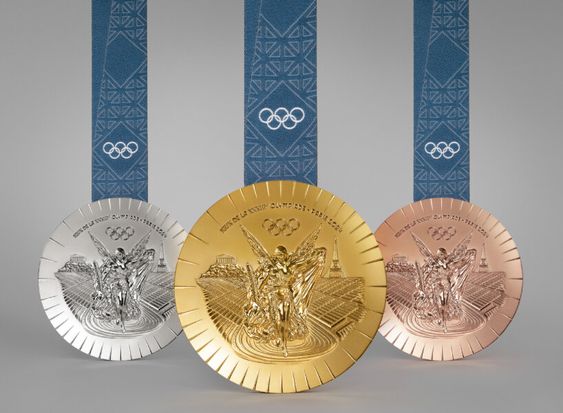
The reverse side of the Paris Olympic medals narrates the rebirth of the Games in Greece, with the goddess of victory “Nike: and the stadium for the Olympic Games in Athens designed by Elena Votsi, with the Eiffel Tower on the right.
Chaumet’s tribute to Paralympic Champions
Though there are no specific rules for the designs regarding the reverse side of the Paralympic medals, here, Chaumet truly showed his creativity and sensitivity in carving the medals.
After paying tribute to Alexandre Gustave Eiffel, next in line is the French inventor of the Braille language, Louis Braille. The engraved words “Paris” and “2024” surrounding the tower are written in Braille, the symbolic language for visually impaired athletes.
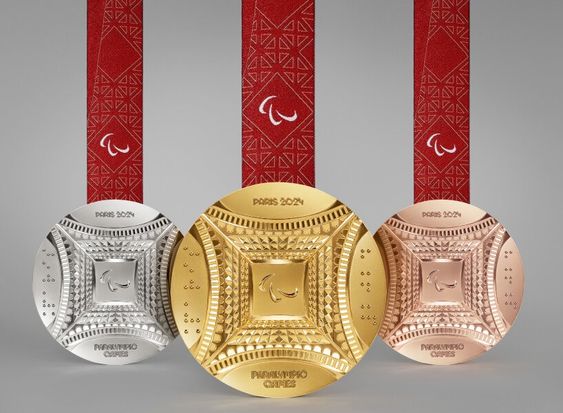
They can feel the difference between the medals with the dashes engraved on the edge: I for gold, II for silver, and III for bronze.
The different colored ribbons of the medals
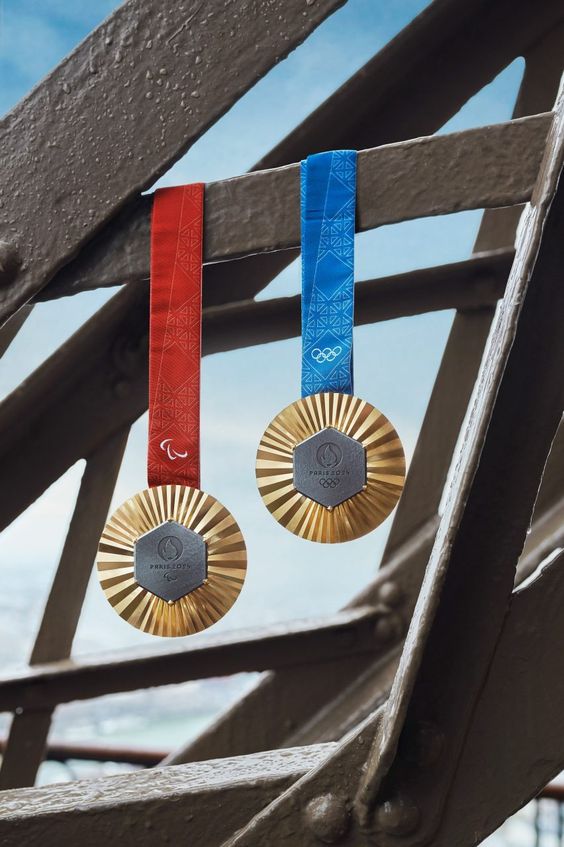
Even the ribbons are created with the utmost thoughtfulness, with a reflection of French symbolism. All the ribbons of the medals are graced with the lattice-work of the Iron Lady, i.e., the Eiffel Tower.
The Olympic medal ribbons are dark blue, and for the Paralympics, medals are deep red—a mix of the first two coats of paint (“Venice red” and “red-brown”) used on the Eiffel Tower.
Why Chaumet was selected to prepare the Olympic medals
These medals, are designed by the historic French high jewelry studio Chaumet, which has its roots in the 18th century and its workshops in Vendôme in Paris, a place with immense historical and architectural value.
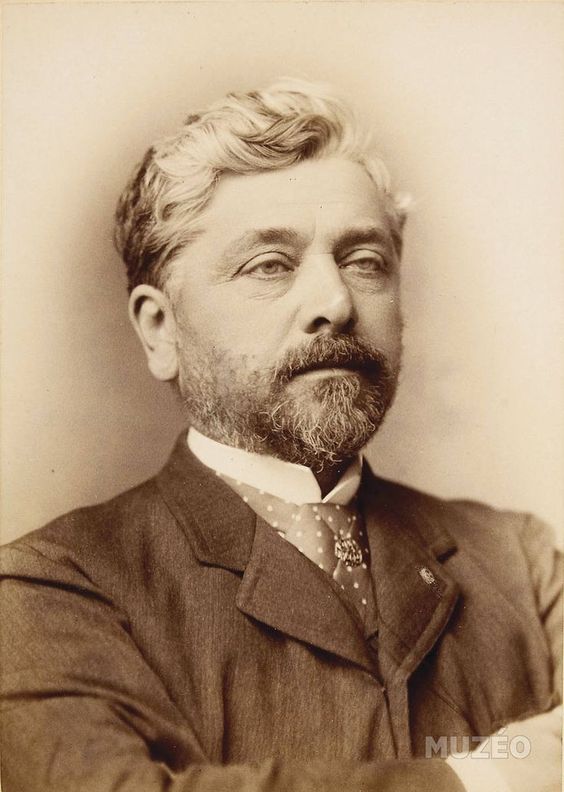
Last but not least, the design of these medals takes a bow towards the “avant-garde” engineer Alexandre Gustave Eiffel, who at the close of the 1800s ordered a pearl necklace from Chaumet to commemorate the wedding of his daughter.
To read about the history of Olympics click the link.
Images Source: Pinterest.com
Info Credits : LVMH.com
olympics.com
